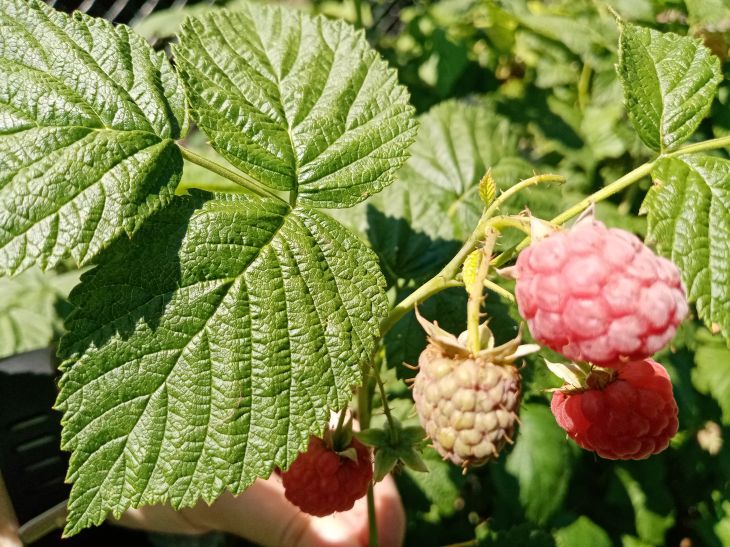Spring mulching of raspberries: 4 ways for a high yield of the crop
Mulching raspberry bushes is an agricultural technique for creating favorable conditions for crop growth.
Often, raspberries are covered with a layer of mulch only in the fall to protect them from frost.
However, few gardeners know that this crop needs to be mulched twice a year.
Spring mulching is an important stage of work at the beginning of the season. The article will tell you why it is needed and what materials can be used for it.
Raspberries and why to mulch them
If a gardener wants to get a large harvest of raspberries, he needs to get into the habit of mulching in the spring. The procedure is necessary for:
• increasing crop yields;
• reducing the number of raspberry shoots so that all nutrients go directly to the bush;
• neat looking raspberry bush;
• effective protection against diseases and pests;
• protecting the soil from overheating and stress from temperature changes in the root system;
• increasing the soil fertility index and improving its structure;
• retaining moisture in the soil, reducing the need for frequent watering of raspberries;
• stopping the growth of weeds.

Mulching in spring: how to do it
In spring, almost nothing remains from autumn fertilizing. The lack of nitrogen is especially felt. Therefore, work should be started when the shoots have grown by 30 cm and have already been fertilized with mineral fertilizers. Otherwise, the mulch will block the path of fertilizers to the soil.
Straw manure
Mulch and fertilizer in one. A great way to insulate and feed first-year plants. This organic fertilizer can be laid out immediately after the snow melts. It will slowly decompose, warming the roots of the plants.
In this case, organic matter should be laid in a layer of up to 10 cm. By autumn, the soil will be maximally saturated, since the manure and straw will have time to completely decompose and the bushes will overwinter perfectly.
Branches after crown pruning
Material that can be collected after cutting branches from various ornamental and fruit trees. The chopped branches must be laid in an even layer in the raspberry patch, at least 10 cm thick.
They will rot perfectly during the season, giving their useful substances to the soil. The branches do not create a dense covering, helping air to circulate and water to penetrate to the root system without stagnation.
Sunflower seed husks
A convenient type of mulch that lies in a thin layer, allows oxygen and moisture to pass through, but is not blown away by the wind.
If you lay out the husks at the beginning of spring, they will act as insulation for the root system in case of possible recurrent frosts.
In summer it will continue to act as protection, but from overheating from the sun's rays. The layer of material should be no thinner than 7 cm.
Newspapers
Handy material in the form of newspapers has recently become actively used by gardeners as a way to mulch perennial plantings. Modern printing ink is non-toxic, newspapers are inexpensive, and laying out this kind of mulch is not difficult. Newspapers can be laid in layers, layering 4-6 newspapers, but first loosening the soil, or in crushed form.
It has been noted that paper helps to increase the harvest. It does not contain any nutrients, but it does restrain young plants and weeds, due to which only mother bushes receive nutrition from the soil, increasing the number of berries.
It is important to mulch raspberries in the spring, immediately after the snow melts, loosening, watering and adding mineral fertilizers. This way, it will retain moisture for a long time and will begin to grow actively. It will be convenient for the gardener to care for a neat raspberry patch without weeds and debris.
